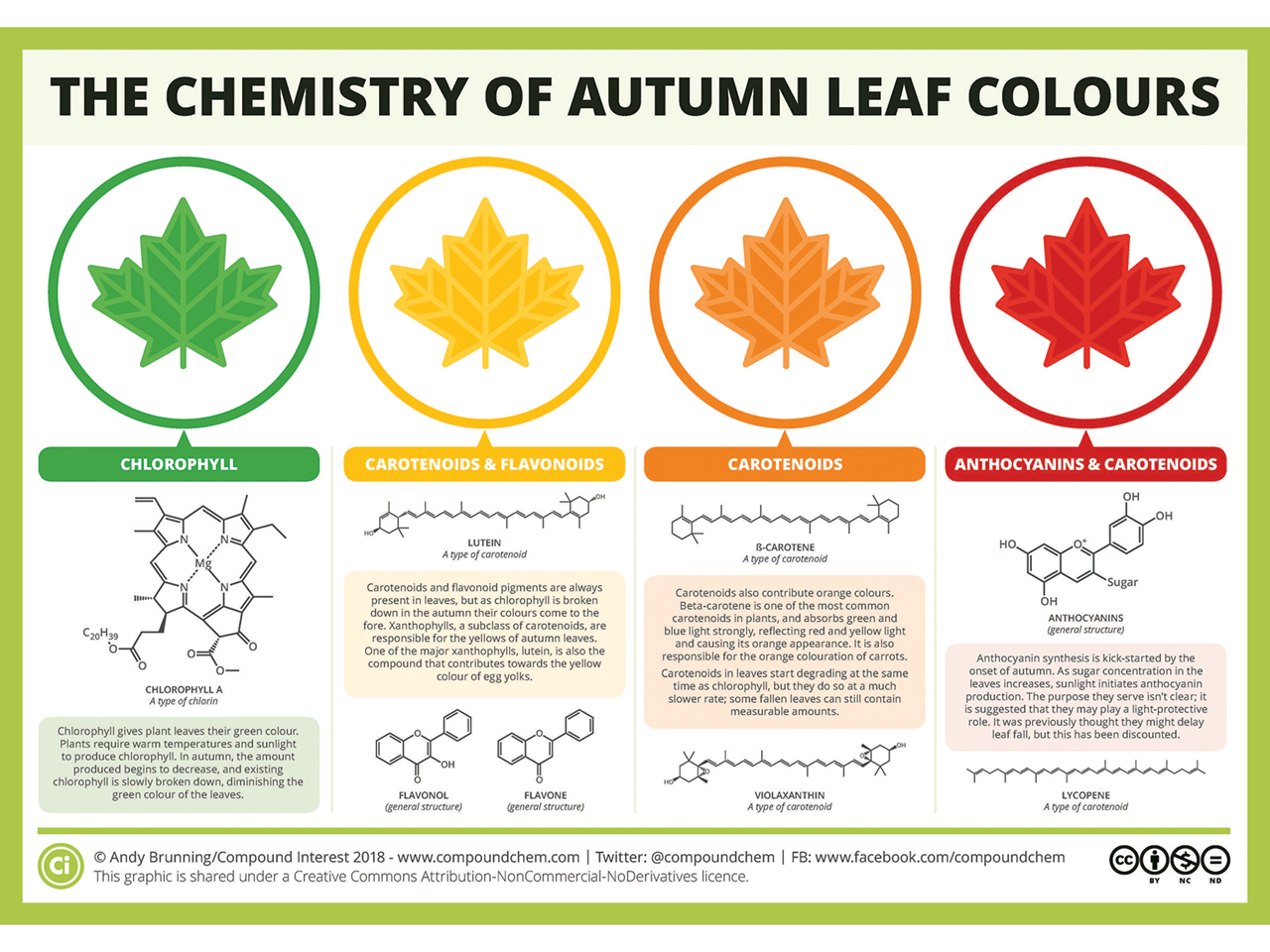
Why do leaves change color? Fall foliage, explained
Josh Morrisey, City of Spokane Parks & Recreation, Marketing Assistant, 509.625.6236
Tuesday, October 1, 2019 at 5:03 p.m.

Updated 11/4/2022
Right about now, you’re probably noticing the previously green leaves of Spokane’s park trees slowly turn an array of yellows, oranges, and reds. It’s not a surprise. After all, this happens every year. But why?
The fireworks show of fall color creeping its way across Spokane is magical to watch, but has a scientific explanation. Before we delve into the details of this autumnal phenomenon, let’s leaf through a few terms.
Chlorophyll: The chemical responsible for the green we see in leaves.
Carotenoids and Flavonoids: Pigments present in leaves year-round that contribute to the yellow and orange colors you see in fall.
Anthocyanins: Pigments present in leaves towards the start of fall that contribute to red and purple hues.

The Chemistry of Autumn Leaf Colours courtesy of Andy Brunning/Compound Interest 2018
Now that we’ve learned our terms, you might wonder: “If the carotenoids and flavonoids that cause yellow and orange colors are always present in leaves, why don’t we see them year-round?”
During spring and summer, trees produce large amounts of chlorophyll due to the warmer temperatures and increased sunlight (remember, chlorophyll makes leaves green). So much so, in fact, that it drowns out the color from carotenoids and flavonoids. But as summer gives way to the colder, shorter days of fall, chlorophyll production slows down and existing chlorophyll quickly breaks down, finally allowing our fall colors to pop!
As chlorophyll recedes and sugars increase, a process called anthocyanin synthesis begins. This contributes to the reds, purples, and even pinks you sometimes see in leaves.
Carotenoids also begin to break down at the onset of fall, just much slower than chlorophyll, allowing us to get our brief, but beautiful display of color before trees begin to drop their leaves.
